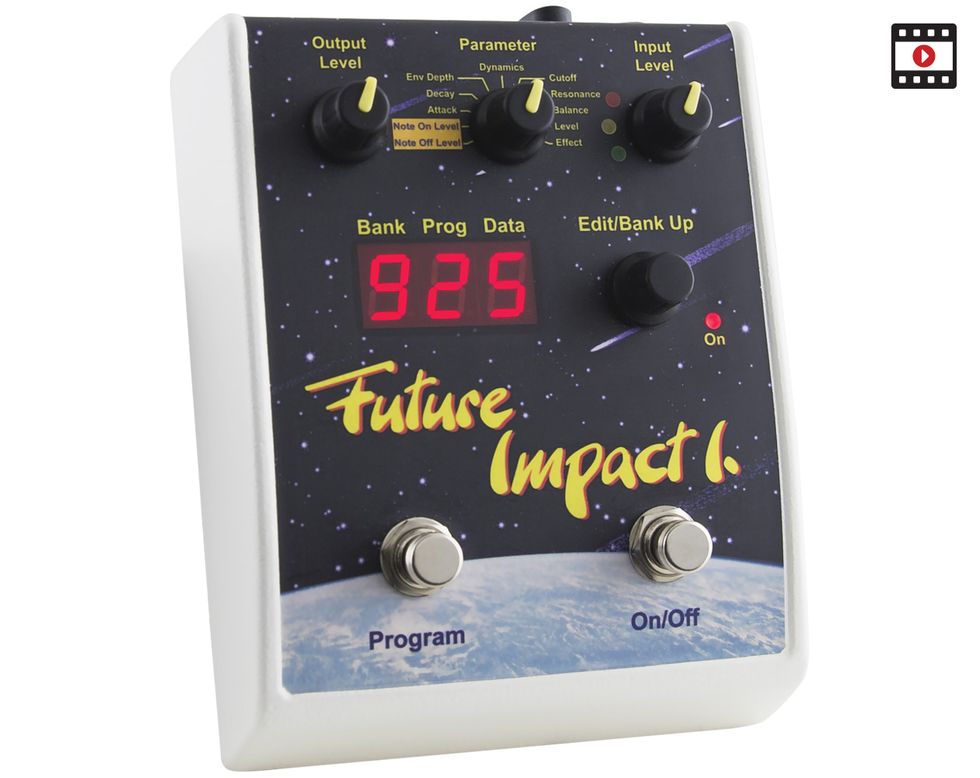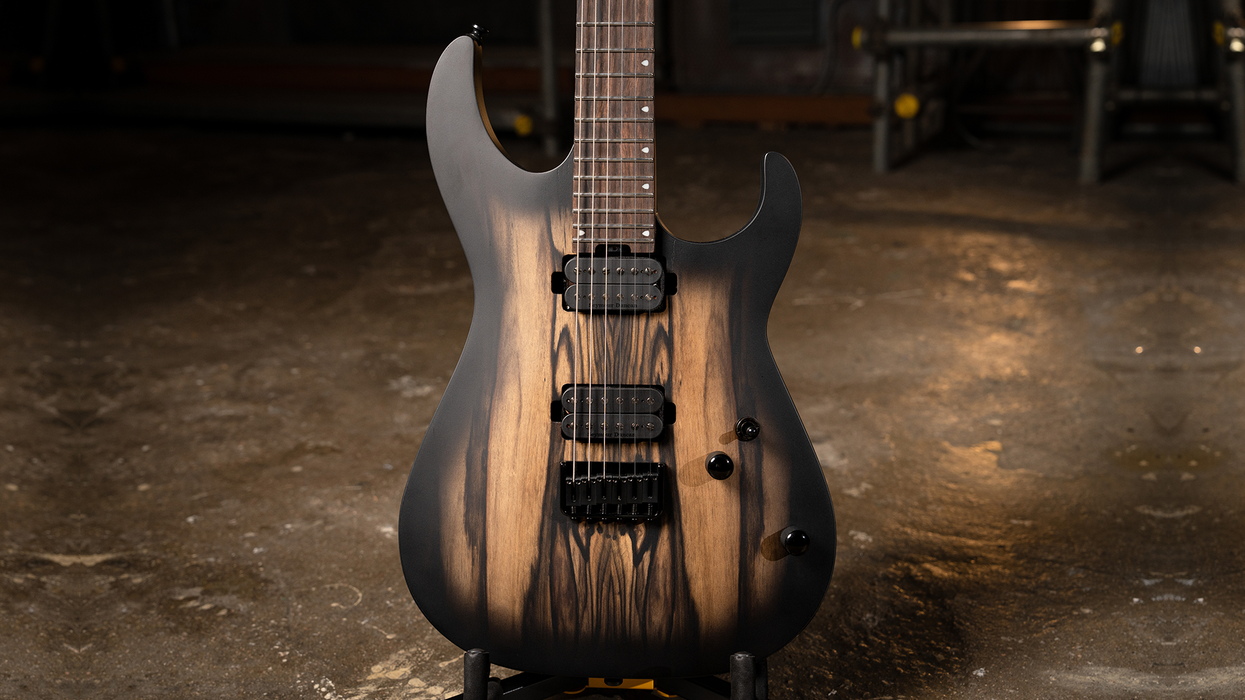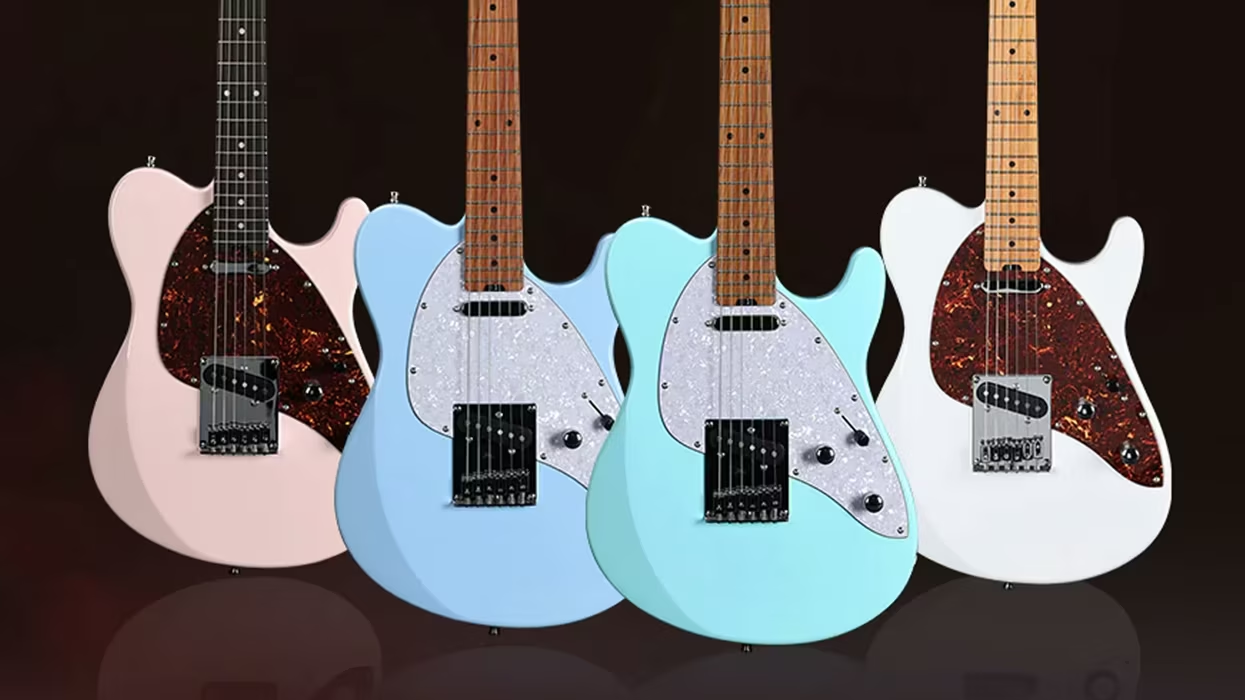Recorded using Mesa/Boogie 400+ head, Mesa/Boogie Powerhouse 4x10 cabinet, and PreSonus AudioBox iTwo interface.
Clip 1 - Moog-like bass synth and direct signal, 50/50 blend
Clip 2 - Metallic double synth and direct signal, 50/50 blend
Clip 3 - Melodic flatpicking with pitch-shifted delay repeats and reverb
[**With 80-100 parameters to adjust for each program, general descriptions have been provided rather than detailed settings.]
Deeply inspired by the sought-after Akai Deep Impact bass synth that was produced in the mid-’90s, Panda Audio’s Future Impact I. steers clear of the exact-to-spec reissue route and instead uses DSP technology to bring the thick and wild sounds of the original pedal into the modern era. While it reproduces all nine of the original’s tones, it also adds many more abilities, with the most noteworthy being deep editing and the brain to store 99 variations arranged in 10 banks.
A Classic Reborn
The Future Impact’s four oscillators run at 512 kHz, which results in a much clearer signal than the Deep Impact’s 32 kHz. It also includes several time-modulation effects, like reverb and delay, a new foldover distortion feature, and MIDI in and out jacks. The required 9V power supply isn’t included in the package, which is a little bit of a disappointment considering the pedal’s high price.
Ratings
Pros:
Outstanding analog-synth replication and wide-ranging filtering. Infinitely tweakable and programmable. Endless fun.
Cons:
No polyphony. PC connection is MIDI only. Power supply not included. Expensive.
Tones:
Ease of Use:
Build/Design:
Value:
Street:
$499
Panda Audio Future Impact I
godlyke.com
The pedal houses four knobs for governing input and output levels, choosing your program bank, and selecting one of 11 parameters for editing in your selected program. Pressing down on the edit knob cycles through the program banks. There’s a large LED that clearly shows what bank and program you’re in, as well as a pair of footswitches for stepping through the selected bank’s programs and for effects bypassing. Accessing the deep-level settings of the programs is accomplished via the free editing program found on the company’s website.
Music for the Massive
After warming up my Mesa/Boogie 400+ and 4x10 cabinet, I plugged a Fender P into the Future Impact I., set the pedal’s input level accordingly, and played with the first bank’s preset sounds. Each of the pedal’s 99 slots zeroes in on a particular type of sound, such as funky envelope filtering, crisp Moog-like grind, and spacey delay pads. And there’s an absolute wealth of sounds here that would take weeks for even the most focused pedal junkies to fully explore.
The Future Impact I. sounds astonishingly similar to its inspiration, and—for better or for worse—delivers its richly diverse array of sounds by way of monophonic tracking and processing. With choppy staccato playing and careful muting from my fretting hand, the tracking was quite good. It was miles better than vintage triggered synths like Korg’s X-911, but there was still some rare glitching present that went away as soon as I placed a compressor pedal between the synth and my bass.
It’s hard to describe just how many tonal possibilities lie within this demented little box, but a couple really stood out. The envelope filtering had an impressive range of subtle quack to vowel-like whomp, coupled with a respectable amount of touch sensitivity. The bass lead programs sounded supremely fat and lively, and with only a few quick alterations I was able to segue between convincing approximations of a classic Minimoog and the revered Prophet-5 from Sequential Circuits. For fans of new wave, there’s even a preset that sounded like a spot-on replica of the bass patch used on Depeche Mode’s “Halo.”
The Verdict
The Future Impact I. delivers an accurate trip through time to when monophonic bass synthesizers required a careful touch and steady synchronization between both your picking and fretting hands. It’s a great pedal with limitless possibilities, but still a curious one in a world that’s filled with other synth pedals that offer polyphony and pitch-perfect tracking, and don’t require that so much attention be paid to how you attack the strings. If you can master the even-handed technique it demands, however, the Future Impact will reward you with some of the wildest, room-filling bass tones this side of a Minimoog.
Watch the Review Demo:








![Rig Rundown: Russian Circles’ Mike Sullivan [2025]](https://www.premierguitar.com/media-library/youtube.jpg?id=62303631&width=1245&height=700&quality=70&coordinates=0%2C0%2C0%2C0)

















